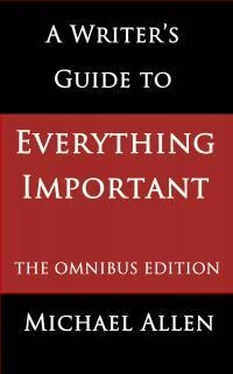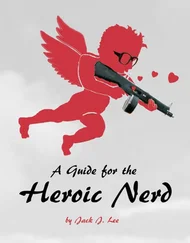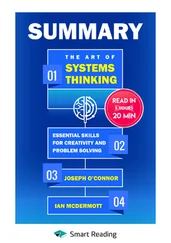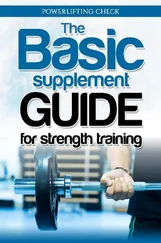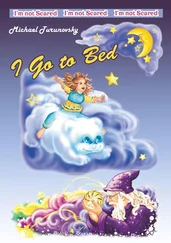What perfect gentleman those lovely publishers are, she would say to herself.
Yeah, right.
PART 4: The impact of the digital age
4.1 POD
About fifteen years ago, if you were paying attention (and I for one certainly was), it was fairly easy to see that there were two pieces of digital technology which were going to have dramatic effects on the book-publishing business. The first of these was a process known as print-on-demand (POD).
Up to about the year 2000, printing was done on big heavy machines which went clank and smelt of hot oil. If you wanted something printed, the text had to be set up in lead type, clamped on to the machine, and then run off in as many copies as you required. Given the complexity of the process, and the time involved, few printers would dirty their machine for less than 500 copies and preferably 1,000.
Digital technology changed all that. I am old enough to remember that my first acquaintance with a Xerox copier was in 1972. Thereafter, that kind of technology improved steadily, until, round about the turn of the century, it was even possible to print paperback books on such a machine; and soon after that, you could do full-colour hardback books.
This process is now known as POD, or print on demand. Not surprisingly, it has offered amazing new opportunities. True, if you want a print-run of 750,000 paperbacks, it is still cheaper to use the old machines; but for short runs POD is ideal.
What this means, in practice, is that small publishers can, if they wish, take a risk with an obscure book, or a first-time novelist, at a much reduced cost.
More to the point, perhaps, a book need never go out of print. In the old days, if you sold your first printing of 2,000 copies, you then had to decide whether to keep the lead type in store (expensive), and if you did decide to do a reprint you would then have to store perhaps 1,000 new copies and wait for them to sell out – slowly. Meanwhile you were paying warehouse costs for them.
Today, you just make a digital file, and place an order for a single book, or half a dozen, as and when needed for a paying customer.
It is worth noticing, in passing, that in the old days it was common for a contract specify that if a book went out of print the contract would come to an end, and all rights would revert to the author. But now – happily for publishers but perhaps not so wonderfully for authors – a book need never go out of print.
Consequently a publisher can hang on to the rights for ever. And he will. Unless, of course, he is sick of the sight of you, in which case you will be dumped in short order.
Another point worth noticing is that POD opened the doors to tens of thousands of self-publishers. In fact, the figure is probably hundreds of thousands.
Technically, it had always been possible for an author to publish his own book. You could do it almost from the beginning of printing: all you needed was lots of money. You might also need a garage (or two) to store the books in while you tried to sell them. Which you never would.
As stated above, your printer would not take on the job without printing a substantial number, which had the benefit of reducing the unit cost to a level at which you might reasonably expect to sell some. But you would probably be left with 9,800 out of a print run of 10,000. People have gone bankrupt and been divorced by their spouses for lesser offences than that.
But today, POD offers truly amazing facilities at astonishingly low cost.
For example. Suppose you are some sort of eccentric weirdo, and you want to publish a full-colour hardback book, 12 inches square, 160 pages long, on top quality paper, consisting of nothing but photographs of various doors in Venice. The cost, 20 years ago, would have been unthinkable for anyone but a millionaire. Today you can do it for well under £100.
I know this for a fact, because that’s exactly what I did myself, four years ago. If you go to blurb.com and search for The Doors of Ancient Venice , you can have a look at my book on the preview page. As a matter of fact you can even buy a copy, because technically this book is ‘published’ in the sense that it’s on sale to the public. But no one ever has bought a copy, and I don’t expect them to. I created it purely for myself and a few friends who are keen on Venice.
If you want to print, say, 20 copies of a short story, to hand out to your local writers’ group, or a booklet about the history of your church, in simple black and white, then you can do that too, for perhaps a pound or two per copy.
If you have not yet grasped the point, it is this: anyone who wishes to publish their own book, in old-fashioned print form, can do so. All they have to do is learn the software and prepare the text for digital printing, or get a sixteen-year-old grandson to do it for them.
Should you feel terrified at the thought of anything more complicated than writing a letter in Word, then there are, of course, many firms which will do the job for you. These firms began to come to the fore about ten years ago, and now there are dozens of them.
The most famous provider of self-publishing services is perhaps a company called Author Solutions. It has many subsidiaries – some would say disguises. Over the past few years, companies of this type have ‘helped’ tens of thousands of writers to publish their novel, or their memoirs, or a book of favourite recipes – whatever. And no doubt there are, somewhere, some satisfied customers.
I have to say, however, that I have never used one of those services myself, because I don’t trust them and consider them far too expensive. And, from those who have used these services, there arises a never-ending stream of complaint – often couched in the bitterest terms.
If you google “Author Solutions”, and ignore the top returns because they often lead to the firm’s own pages, you will soon get a feeling for the attitude of many customers. Phrases such as ‘market leader in author exploitation’ and ‘universally reviled’ soon come to your attention.
In 2012, Author Solutions was purchased by Penguin for $116 million, which gives you some idea of the perceived scale of potential customers and the estimated profit which can be made from them. But three former clients of Author Solutions feel so strongly that they have been cheated that they are going much further than the usual litany of complaints on internet forums. These three are trying to launch a class-action lawsuit against Penguin, alleging that Author Solutions misrepresents itself with the intention of attracting authors, makes false claims, fails to pay royalties, and so on and so forth. The three authors claim $5 million in damages.
Some observers are watching Author Solutions very carefully. And they don’t like what they see. They believe that the firm exploits over-ambitious writers who are prepared to spend their life savings, or somebody else’s, on publicising a book in the mistaken belief that, once publicised, it will rise to the top of the bestseller lists.
David Gaughran, for example, recently noted that, for some years, Author-Solutions reps have been attending the prestigious literary festival known as the LA Times Book Fair.
In 2013, Author Solutions set up 80 book signings for their clients, at this one Fair, and in addition they ‘showcased’ some 1,100 titles.
And how much, do you think, did that raise for the company?
Gaughran says that the company’s own price lists states that they charge $3,999 to run a book signing, and $599 for a showcase. Total at one Book Fair: $319,920.
But those rates are cheap. Suppose, for the sake of argument, that you want to give your book a whole-page ad in the book-industry must-read trade journal, Publishers Weekly . Cost? $16,499. And a whole-page ad page in the Readers’ Digest ? $72,499.
Читать дальше
